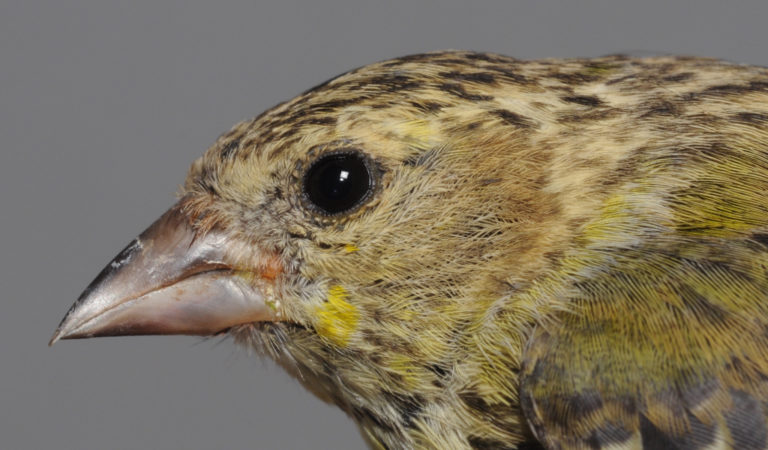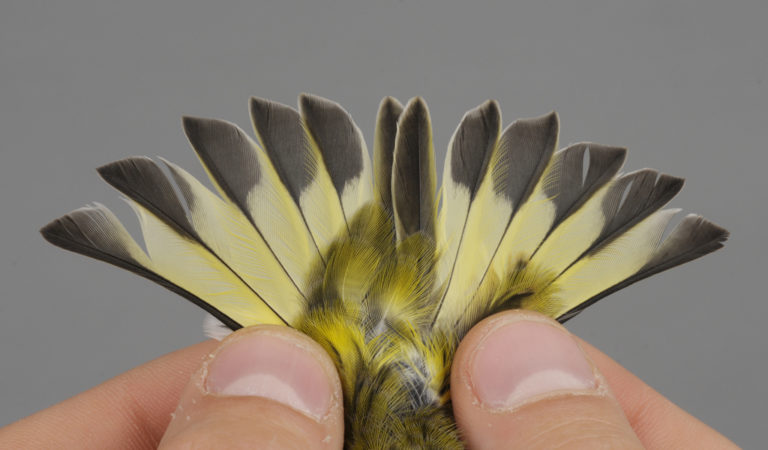

Eurasian Siskin
SEXING:
After the post-juvenile moult, sexing Siskins is generally straight forward on head pattern. But even in juvenile plumage many (but probably not all) birds can be sexed according to the pattern of the tail. If aged incorrectly, birds in juvenile plumage (with no moult contrast) may be mistaken for adult female.

Male, 1cy October. A bird with delayed post-juvenile moult, showing dominantly juvenile plumage. The juvenile crown gives no clue to the sex. Single moulted post-juvenile feathers in the side of the cheek and neck are bright greenish-yellow, implying male, and that was confimed by typical male pattern in the tail. [CN88150]

Male, 1cy, October. Males show on average more, and brighter, yellow and less black in the tail (including juvenile RR as shown here). According to Bayley & Boothby (2015) the length of black (measured on R5, along the shaft, from the tip to the proximal point where the black colour stops in the vane) is <27 mm in males and >30 mm in females (birds with 27-30 mm black should be lef unsexed). Note that the given measurments applies to juvenile RR only. [CV54723]
More Carduelis spinus:
Ageing autumn
Ageing spring
Moult
Ringers’ DigiGuide is sponsored by:
Hemsidan producerad i samarbete med
BirdLife Sverige